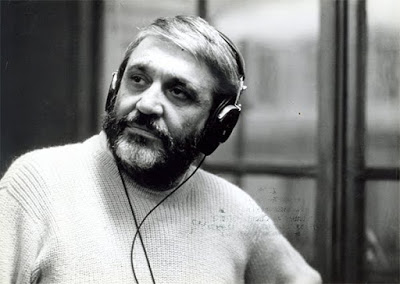Holly Herrick on Maurice Pialat

One thing that you’ll notice immediately in a Maurice Pialat movie is what’s not there. Films that are made up almost exclusively of characters in dialogue never tell us where we are in the story. With enormous gaps, whether they be in time or in plot, Pialat takes us to those precise conversations, however long their duration, where the words spoken go beyond the literal. With Pialat, we return to these moments the way we might if these were our own memories: looking back and understanding how our lives and ruminations evolved from a particular point in time where feelings were permanently bruised, or we were fully awakened to ourselves.
Pialat is a bit of a mystery for American audiences. There is little biographical scholarship about the director whose work appeared after the French New Wave had peaked, who disdained his own era of filmmakers for their overly fetishized relationship with their cinematic heroes, who rejected the idea of cinema as anything but a moral obligation. At the time, he didn’t fit in with any thread of his contemporaries, though he, along with filmmakers Jean Eustache and Jacques Rozier, would form an anti-establishment trio who would not share an aesthetic but a philosophy: the idea of a cinema grounded in intuition and an exploration of personal truth, authentic physicality, incredible emotional sensitivity. Pialat was known for declaring that all of cinema could have ended after the first film of the Lumières:
“What is too bad with cinema is that it never progressed. The first film was the best… it already had everything.”
Unsurprisingly, the lightness of the new wave would be absent from Pialat’s films. The director and actor Noémie Lvovsky, one of the many filmmakers greatly influenced by Pialat, perhaps said it best:
“I have never had such a strong impression of seeing outright despair, love or hate. As though (Pialat) could actually touch emotions that you feel in real life.”
Pialat was born and raised in Auvergne, a very rural, remote region of central France where the primary industry is coal mining. When he was still young, Pialat’s parents moved the family from the backwoods of Auvergne to the Parisian suburbs. This move would result in Pialat having a permanent sense of exile, a theme that would show up over and over again in his films. In Paris, Pialat entered architecture school and discovered his love for painting. After the war, despite exhibiting his work in galleries that showcased the work of young artists, he became fed up with painting, fell into deep depression, and at a certain point, turned his attention to cinema. Making short film after short film, and then working as an assistant for years on others’ features, Pialat was unable to put together the resources for his own feature film until 1968. He was well into his 40s, and the New Wave was at the end of its decade of dominance. But his first feature L’ENFANCE NUE was a remarkable critical success. Despite it being a debut film, it was from a fully developed artistic voice. Even today it feels like a breath of fresh air and completely apart from other coming of age stories.
Pialat’s tortured demeanor and gruffness were famous in the French film industry, and inseparable from his personal struggles as an artist and his born emotional fragility. Everything for Pialat would be personal. A NOS AMOURS follows a young girl who looks everywhere outside of herself for love, and comes from a family where money, the family business, and familial and romantic relationships are all blended together in discord. Arlette Langmann, with whom he had a quite serious love affair, wrote the screenplays for A NOS AMOURS and LOULOU, basing the latter on her and Pialat’s break up when she met a new man. UNDER THE SUN OF SATAN, the adaptation of a George Bernanos novel (the same author of DIARY OF A COUNTRY PRIEST) and Pialat’s most Bressonian film, may appear at the outset to be a departure from Pialat’s tendancy to be autobiographical. But in fact everything about that film’s main character, Dossignan, a priest who self flagellates for his lack of talent in his chosen métier and performed by a chubby, maladroit Gerard Depardieu, speaks to Pialat’s struggles with self-doubt and concerns about artistic failure. Pialat’s most autobiographical film of all is WE WON’T GROW OLD TOGETHER, based on his own novella and attempt to put to rest his agitation from a long-running, unhappy affair with a much younger woman that took place while he was still married to his wife.
In Pialat, we more often than not experience a sense of loss or a feeling of having been abandoned by those that we deem most important in our lives: family, lovers, God, or even as in LOULOU, part of ourselves. It is thanks to Pialat’s absolute conviction in facing his own weakness that led to a cinema so uniquely his own.
Sources:
MAURICE PIALAT by Joël Magny. Éditions de l’Étoile/Cahiers du Cinema, 1992.
MAURICE PIALAT by Gérard Pangon. Éditions Mille et une nuits/ARTE Éditions, 1997.
MAURICE PIALAT by Marja Warehime. Manchester University Press, 2006.












